7 Creative Rewards for Referrals to Maximize Growth in 2025
In the competitive world of e-commerce, acquiring new customers is a constant challenge. While paid ads and social media campaigns have their place, they often come with high costs and diminishing returns. What if you could turn your most valuable asset, your existing customers, into your most powerful marketing engine? This is the promise of a well-structured referral program, and its success hinges on offering the right rewards.
The key to unlocking this potential lies in offering compelling rewards for referrals that not only motivate advocates but also attract high-quality new customers. Generic discounts are no longer enough to capture attention or drive meaningful action. To truly succeed, Shopify and e-commerce merchants need a strategic approach that aligns incentives with business goals, from boosting sign-ups to securing long-term loyalty.
This listicle moves beyond generic advice to provide a strategic blueprint. We will explore seven innovative and effective reward structures, dissecting the platforms that power them, such as Toki, Hostinger, and Fiverr. For each example, you'll find screenshots, direct links, and actionable insights on how to implement similar programs. Get ready to transform your customers into brand champions and watch your business grow organically.
1. Toki
For Shopify merchants seeking a comprehensive, all-in-one platform to manage rewards for referrals and build lasting customer loyalty, Toki presents a formidable and well-rounded solution. It moves beyond basic referral link generation, offering a sophisticated ecosystem designed to transform one-time buyers into dedicated brand advocates through a powerful combination of referrals, paid memberships, and engaging gamification. Its seamless Shopify integration ensures a quick setup, allowing businesses to launch a robust loyalty program without extensive technical overhead.
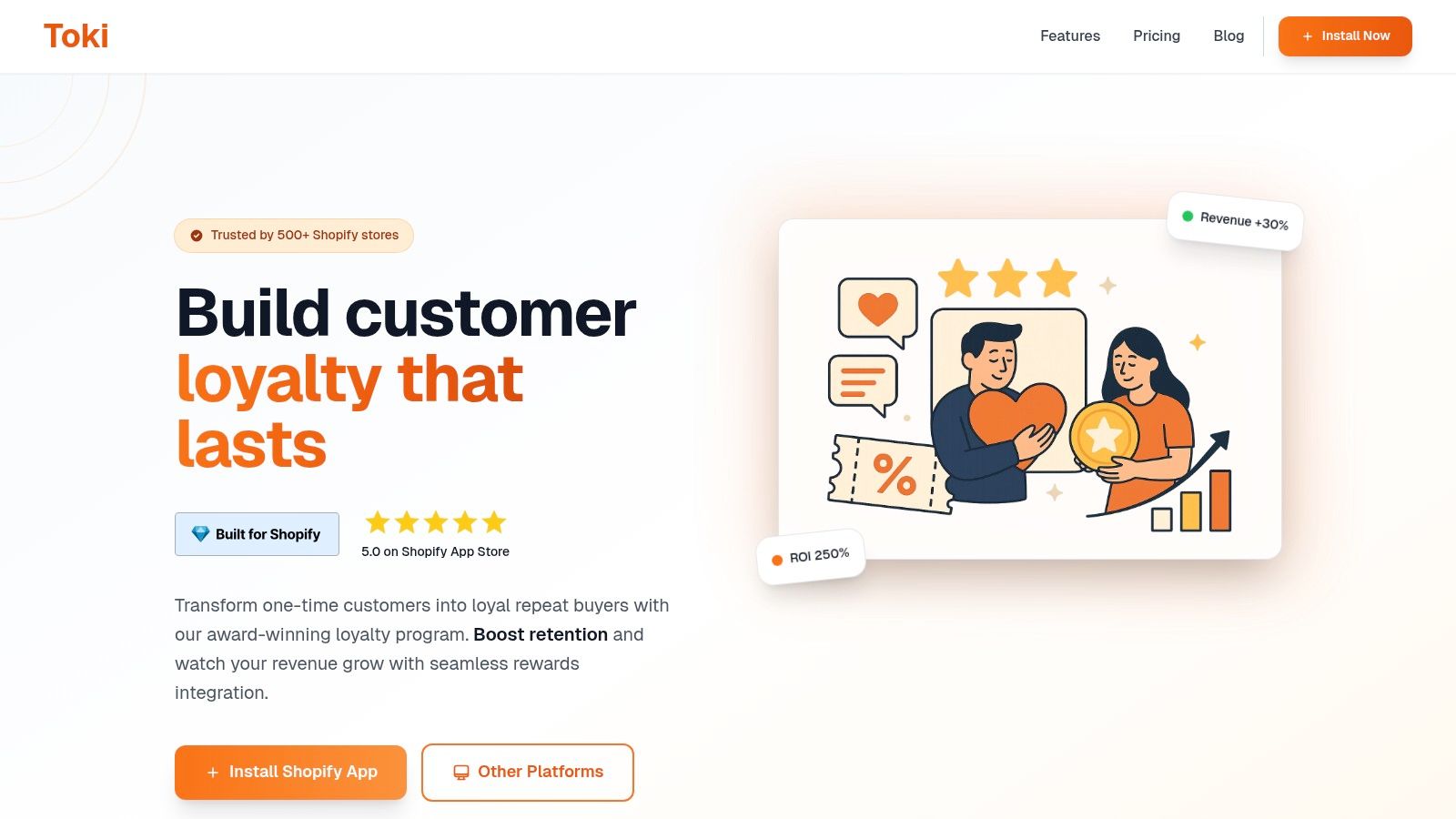
What truly distinguishes Toki is its holistic approach. While many platforms handle referrals in isolation, Toki integrates them into a broader loyalty framework. This means merchants can create multi-faceted campaigns where referrals not only earn direct rewards but also contribute to a customer's overall status within a tiered membership program, unlocking exclusive perks and fostering a deeper sense of community. This integrated strategy significantly enhances customer lifetime value.
Key Features & Strengths
Toki’s feature set is designed for maximum impact and merchant control. It excels at delivering a rich, interactive customer experience that drives both engagement and revenue.
- Integrated Referral & Affiliate System: Go beyond simple "give $10, get $10" models. With Toki, you can structure multi-tiered referral rewards, create custom landing pages for advocates, and manage a full-fledged affiliate program from the same dashboard.
- Tiered Paid Memberships: Unlock a new revenue stream by offering exclusive paid membership tiers. This feature works synergistically with referrals, allowing you to reward advocates with access to premium content, early product releases, or special discounts.
- Omnichannel Loyalty: Toki unifies the online and in-store experience. Its support for POS systems and digital wallet passes (Apple & Google Wallet) ensures customers can earn and redeem rewards seamlessly, no matter where they shop.
- Advanced Gamification: Boost engagement with interactive elements like badges for completing challenges (e.g., "Make 3 Referrals"), points for social shares, and leaderboards to encourage friendly competition among your top advocates.
Practical Implementation
To maximize Toki's potential, focus on creating a cohesive journey. Use the platform’s advanced segmentation to tailor referral offers. For instance, you could offer higher-value rewards to your VIP tier members for successful referrals. The platform’s analytics provide deep insights into advocate performance, allowing you to identify and nurture your most effective brand champions. For merchants interested in optimizing their setup, Toki offers detailed guides on mastering referral program tracking to ensure every conversion is accurately attributed.
Pricing & Suitability
Toki offers scalable and transparent pricing, making it accessible for businesses at various growth stages. A free plan is available for new stores, with paid tiers starting at $59/month and scaling up to enterprise solutions. While the higher-tier plans can be an investment, the comprehensive feature set provides a strong ROI for stores focused on retention.
Pros & Cons
| Pros | Cons |
|---|---|
| Comprehensive Features: An all-in-one platform for loyalty, referrals, and memberships. | Cost at Scale: Higher-tier plans may be expensive for high-volume stores. |
| Seamless Integration: Native support for Shopify, POS, and digital wallets. | Newer Platform: May lack some niche features found in legacy competitors. |
| Strong Social Proof: Highly rated with a proven track record of generating revenue for merchants. | |
| Transparent Pricing: No hidden fees, with plans for startups to enterprises. |
Ultimately, Toki is a best-in-class choice for merchants who view customer loyalty not as a single tactic, but as a central pillar of their growth strategy.
Website: https://buildwithtoki.com
2. Hostinger
Hostinger, a prominent web hosting provider, offers a compelling affiliate program that functions as an excellent model for cash-based rewards for referrals. While not a traditional e-commerce brand, its structure provides a powerful case study for Shopify merchants, especially those in tech, software, or high-value service industries. The program's core is a straightforward, high-value commission that incentivizes advocates to promote a service they trust.
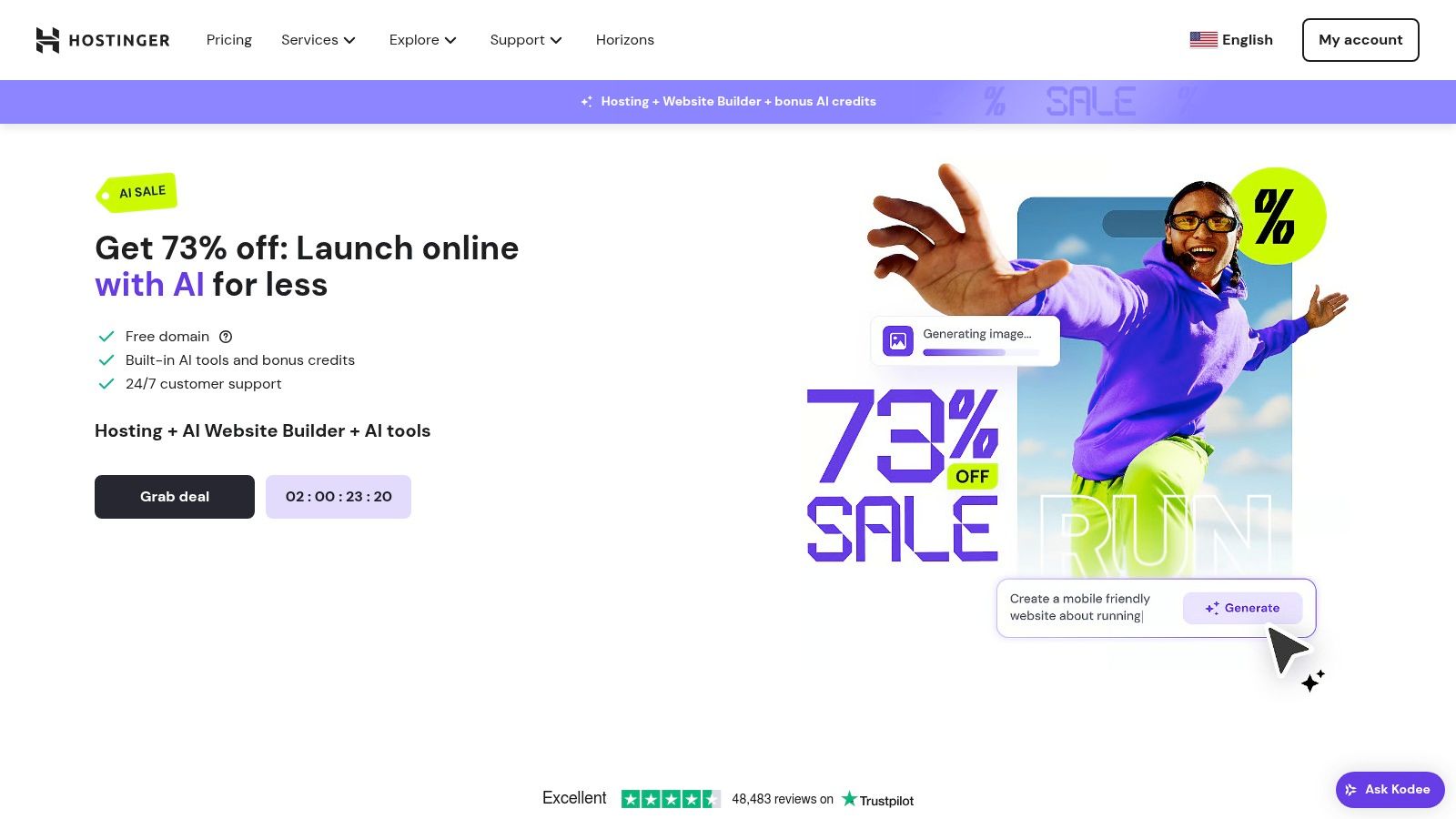
The program's primary strength lies in its dual-sided incentive. The referrer earns a significant 20% commission on the referred friend's first purchase, with a generous cap of up to $200 per referral. Simultaneously, the new customer receives a 20% discount on their hosting plan at checkout. This mutual benefit removes friction and makes the referral feel like a genuine "win-win" recommendation rather than a simple sales pitch.
Key Program Features & Implementation
Hostinger makes its program highly accessible directly through its native user dashboard, the hPanel. This integration is a key takeaway for merchants, demonstrating the power of embedding referral access where users already spend their time.
- Commission Structure: 20% commission on the first purchase.
- Friend Offer: 20% discount for the new customer.
- Payout Condition: Rewards are validated and paid out after the referred customer's 45-day money-back guarantee period expires. This is a crucial risk-management detail for businesses with long refund windows.
- User Experience: Managing referrals is seamless within the hPanel, where users can track clicks, sign-ups, and pending commissions.
Expert Insight: The 45-day hold on commission payouts is a strategic practice that e-commerce brands should consider. It ensures that rewards for referrals are tied directly to legitimate, retained revenue, protecting your business from paying out on sales that are later refunded. This aligns the advocate’s success with the company’s long-term health.
Hostinger's model is particularly effective because the high commission potential encourages affiliates to invest real effort in their promotional activities, from writing blog posts to creating video tutorials. For an e-commerce store, a similar cash-based system can be a game-changer for driving high-quality traffic and acquiring new customers with a strong purchase intent.
Learn more at Hostinger's Website.
3. Fiverr
Fiverr, the massive global marketplace for freelance services, offers a simple yet effective referral program that serves as a strong model for e-commerce stores, especially those looking to reward customers with store credit. The program centers on providing immediate, tangible value to both the referrer and the new customer, encouraging organic promotion within a community that already values the platform’s services. This approach is highly relevant for merchants who want to foster a self-sustaining ecosystem where rewards for referrals directly translate into future purchases.
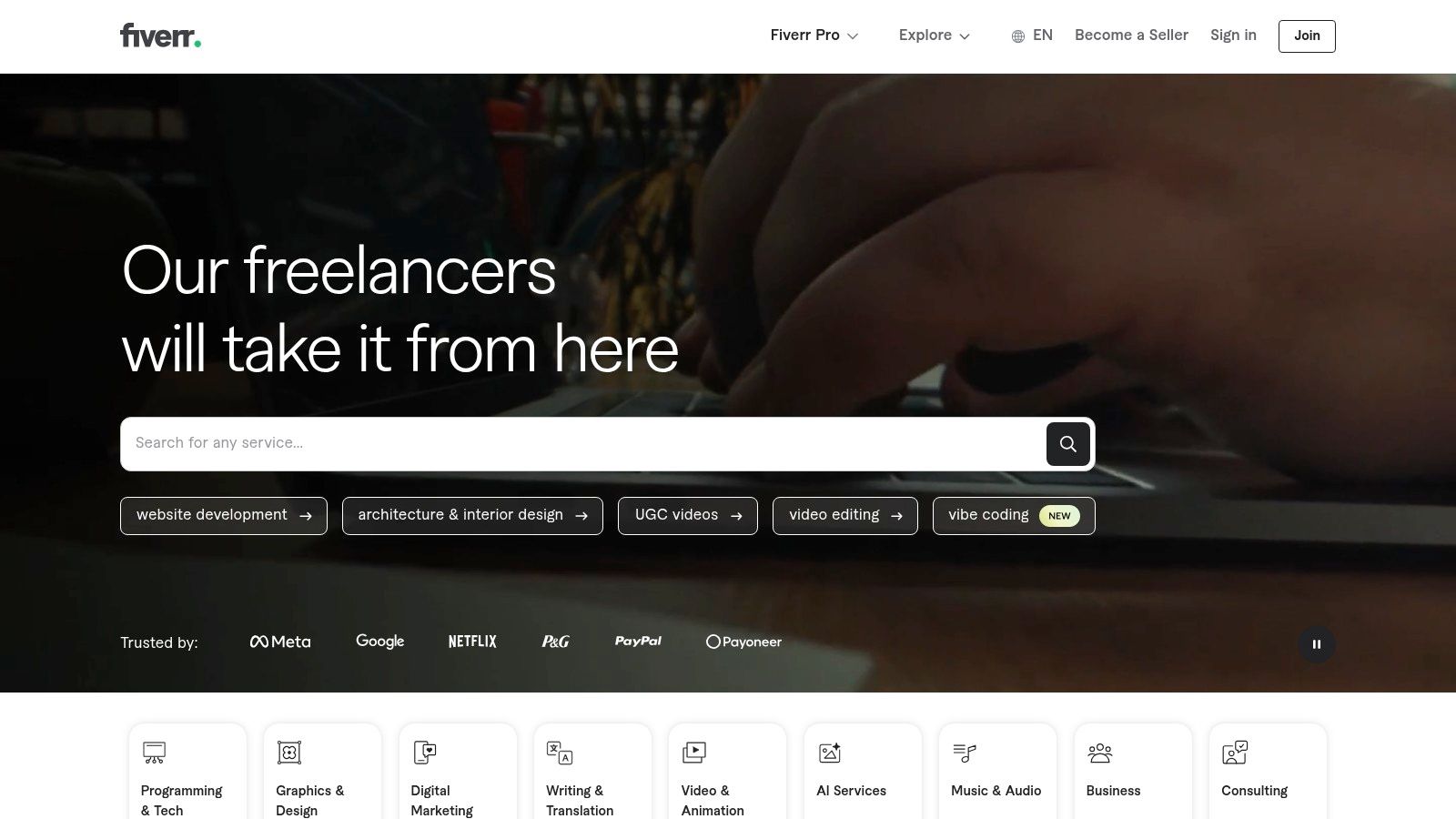
The program's core strength is its dual-sided incentive structure. The advocate earns 10% of their referral’s first order value in Fiverr Credits, capped at $100 per referral. This credit can then be used for any service on the platform. In parallel, the referred friend receives a 10% discount on their first purchase, making the offer highly attractive. This system creates a powerful loop where rewards encourage repeat engagement with the brand.
Key Program Features & Implementation
Fiverr's program is seamlessly integrated into its user interface, making it incredibly easy for users to find and share their unique referral link. This accessibility is a key lesson for Shopify merchants aiming to reduce friction in their own programs.
- Commission Structure: 10% of the first order value, paid in Fiverr Credits.
- Friend Offer: 10% discount for the newly referred customer.
- Payout Condition: Rewards are credited once the referred friend's order is marked as "Completed." The total earnings are capped at $500 in Fiverr Credits.
- User Experience: Advocates can easily share links via email, social media, or a direct link. The process is straightforward, with clear instructions and tracking available within the user’s profile.
Expert Insight: Using platform credits instead of cash is a brilliant strategy for increasing customer lifetime value. It ensures that the value generated from the referral program is reinvested directly back into your business. For e-commerce stores, offering store credit or exclusive points keeps rewarded customers engaged and incentivizes their next purchase, directly boosting retention rates.
Fiverr's model demonstrates that rewards for referrals don't always need to be cash to be compelling. By offering platform-specific currency, they ensure advocates are also active customers, strengthening the community and driving sustained revenue. This is one of many powerful referral program examples for e-commerce brands looking to build loyalty.
Learn more at Fiverr's Website.
4. Swagbucks
Swagbucks, a massive online rewards and loyalty platform, offers a masterclass in creating a long-term, passive rewards structure. While primarily a B2C platform where users earn points (called "SB") for various online activities, its referral program provides a unique and powerful model for e-commerce stores looking to foster sustained advocacy. The program moves beyond a one-time bonus to create a continuous incentive stream, rewarding advocates for the ongoing engagement of their friends.
The program's core strength is its lifetime commission model. Referrers earn 10% of their referral’s qualified earnings for life. This means as long as the referred friend actively uses the platform, the original advocate continues to benefit. It also includes a dual-sided upfront bonus: both the referrer and the new user receive a 300 SB bonus (equivalent to $3) once the new user earns their first 300 SB within 30 days. This creates an immediate incentive for the new user to engage, which in turn benefits the referrer.
Key Program Features & Implementation
Swagbucks makes sharing easy with a unique referral link available directly within the user's account dashboard. This simplicity is a key lesson for merchants aiming to reduce friction in their own programs.
- Commission Structure: 10% of the referral’s lifetime earnings, paid in SB points.
- Friend Offer: A 300 SB bonus after earning their first 300 SB.
- Referrer Bonus: A matching 300 SB bonus when the friend meets the initial earning threshold.
- Payout Condition: Points are credited as the referral earns them, with no cap on the number of referrals one can make. Points can be redeemed for gift cards or PayPal cash.
Expert Insight: The "lifetime value" commission is a game-changer for businesses focused on retention. By tying rewards for referrals to the ongoing activity of the new customer, you encourage advocates to bring in users who will genuinely engage with your brand long-term. This model inherently filters for higher-quality customers, not just one-time buyers.
The Swagbucks approach is exceptionally well-suited for brands with high customer engagement, such as subscription services, gaming platforms, or community-focused stores. It transforms a simple referral into a lasting partnership between the brand and its most loyal advocates, driving both acquisition and retention simultaneously.
Learn more at Swagbucks' Website.
5. SoFi
SoFi, a comprehensive personal finance platform, demonstrates an excellent model for using points-based rewards for referrals, particularly for service or app-based businesses. Instead of direct cash, SoFi rewards users with points that are redeemable within its ecosystem, a strategy that encourages deeper platform engagement and retention. This approach is highly relevant for e-commerce brands looking to build a self-sustaining community around their products and services.
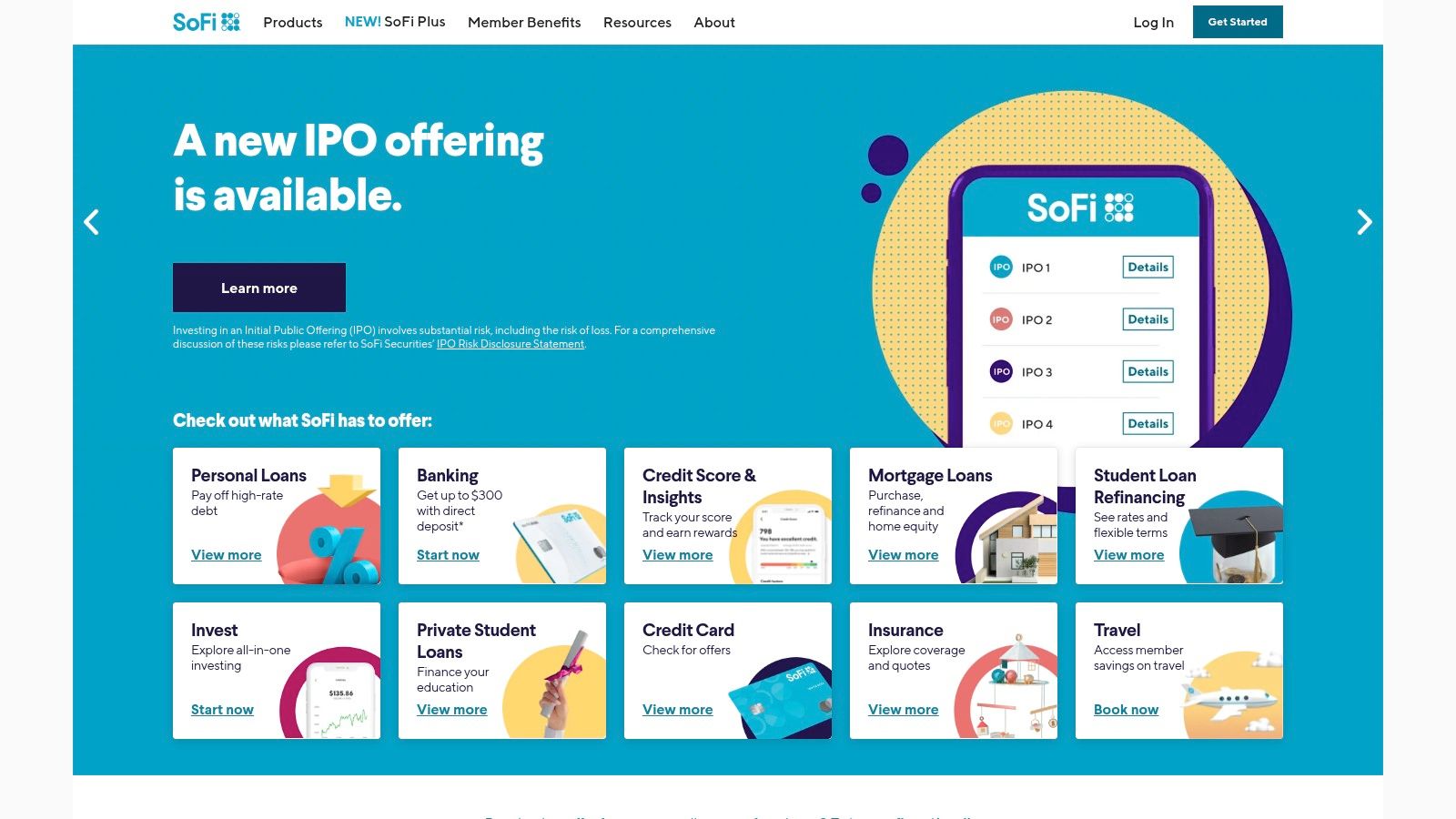
The program's core value lies in its simplicity and mutual benefit. The referrer earns 2,000 reward points (a $20 value) when their friend downloads the app and registers using their unique link. In return, the new user gets a welcome bonus of 1,000 reward points (a $10 value) just for signing up. This dual-sided incentive makes the referral appealing and easy to share, focusing on a low-friction action (app download) rather than an immediate purchase.
Key Program Features & Implementation
SoFi manages its multiple referral programs directly within its user-friendly app interface, making it incredibly simple for users to find their link and track their rewards. This seamless integration is a powerful lesson in reducing user effort to maximize participation.
- Advocate Reward: 2,000 reward points ($20 value) per successful referral.
- Friend Offer: 1,000 reward points ($10 value) upon registration.
- Reward Type: In-platform points that can be redeemed for various financial actions, keeping value within the SoFi ecosystem.
- Program Cap: Rewards are limited to five successful referrals for this specific app-download program, a method to control costs while still encouraging casual sharing.
Expert Insight: Capping rewards, as SoFi does, can be a smart cost-control strategy for e-commerce stores launching a new program. It allows you to test the effectiveness of your rewards for referrals without risking runaway expenses. You can always raise or remove the cap later as you measure the program's return on investment.
SoFi's model proves that rewards don't always have to be cash. By offering points redeemable for services, you tie the reward directly to your brand, encouraging new and existing customers to explore more of what you have to offer and driving long-term loyalty.
Learn more at SoFi's Website.
6. Google Workspace
Google Workspace provides a prime example of a tiered, cash-based referral program that rewards advocates based on the value of the referred customer. While a B2B SaaS product, its model offers a valuable blueprint for e-commerce stores, especially those with tiered product lines or subscription services. The program incentivizes referrers with a direct cash payment for each new user they bring to the platform, making the reward tangible and highly motivating.
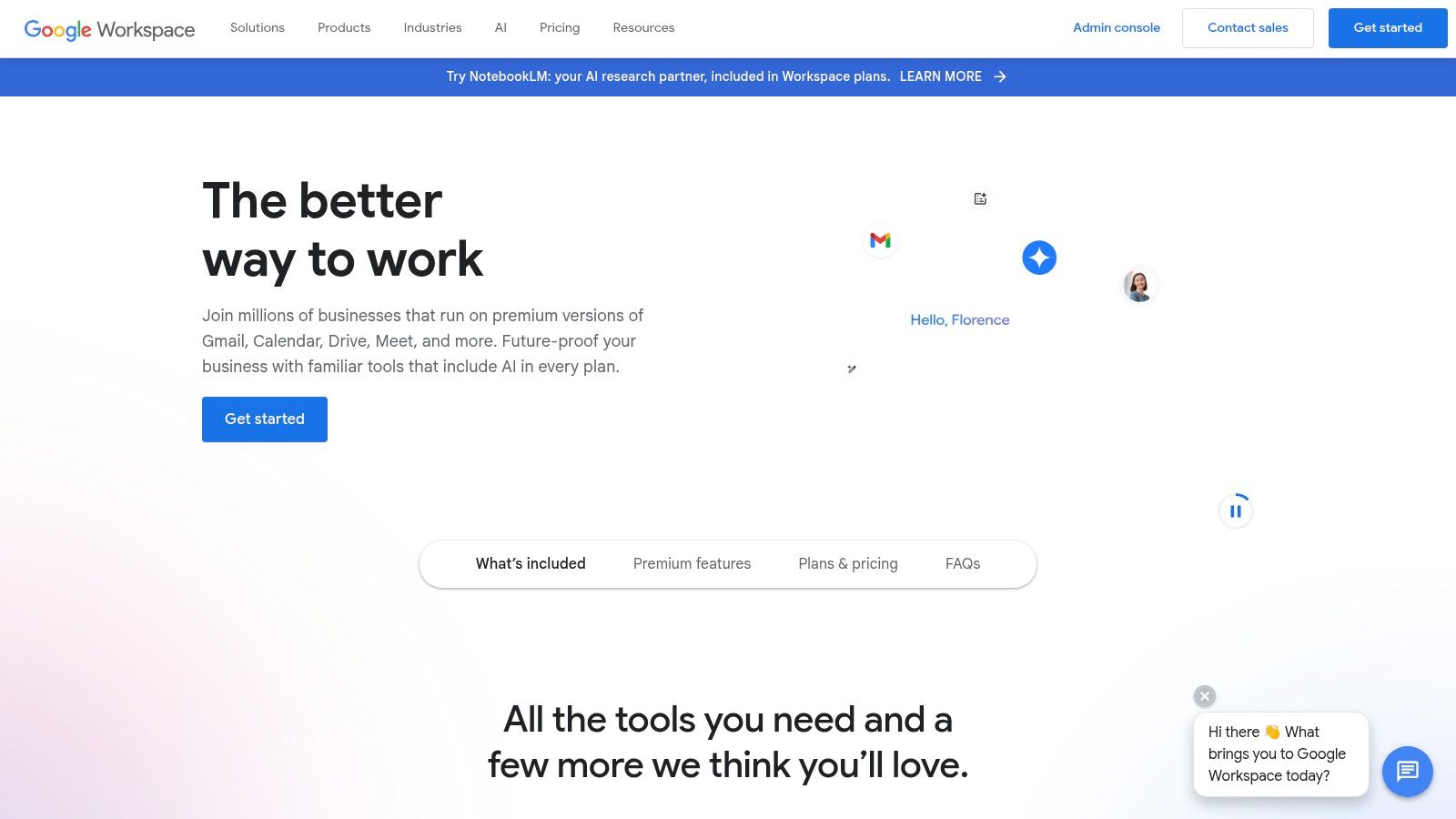
The strength of this program is its scalability and tiered structure. Instead of a flat fee, the reward is tied to the plan the new customer chooses, ensuring the reward's value aligns with the revenue generated. A referrer earns $8 for a Business Starter user, $15 for Business Standard, and $23 for Business Plus. This approach can be directly translated to an e-commerce context, where referrers could earn more for promoting higher-value products or premium subscription tiers.
Key Program Features & Implementation
Google's program is managed through a dedicated referral portal, where advocates can get their unique link and track their performance. This centralized hub approach is an excellent practice for merchants, as it provides clarity and empowers referrers.
- Commission Structure: Tiered one-time cash payments per new user ($8, $15, or $23).
- Friend Offer: New customers often receive promotional codes for a percentage off their first year.
- Payout Condition: Rewards are capped at 200 users per year per referrer, creating an achievable yet high-value target.
- User Experience: A simple dashboard allows users to monitor referred sign-ups and total earnings, making the process transparent and engaging.
Expert Insight: Tying rewards for referrals to the value of the purchase is a powerful strategy. For an e-commerce store, this could mean offering a larger reward when a friend buys from a premium collection versus a clearance item. This incentivizes your advocates to promote your most profitable products, directly benefiting your bottom line.
Google Workspace demonstrates how to motivate referrers to bring in not just any customer, but the right customer. By offering a larger reward for higher-tier sign-ups, they encourage advocates to find businesses that will become long-term, high-value users. This focus on customer quality over sheer quantity is a key lesson for any brand looking to build a sustainable referral engine.
Learn more at Google Workspace's Website.
7. T-Mobile
T-Mobile, a leader in the telecommunications industry, provides a prime example of a straightforward, high-value cash-equivalent reward program. While its business model is service-based, its referral strategy offers powerful lessons for e-commerce merchants, particularly those with subscription services or high average order values. The program is built around a simple, enticing cash incentive that motivates existing customers to advocate for the brand.
The core strength of T-Mobile's program is its clear and generous reward. The referrer receives a $50 prepaid MasterCard for each successful new customer they bring in. This tangible, cash-like reward is highly effective because it has universal appeal and a clear perceived value, making it a compelling reason for customers to share. The program sets a high annual cap, allowing advocates to earn up to $500 per year, which encourages sustained referral activity.
Key Program Features & Implementation
T-Mobile’s program is accessible and easy to navigate, demonstrating the importance of a frictionless user experience. It leverages its existing customer base to drive growth by offering a reward that feels substantial and worthwhile.
- Referrer Reward: $50 via prepaid MasterCard for each new postpaid smartphone plan customer.
- Annual Cap: A generous limit of up to $500 per year, incentivizing multiple referrals.
- Friend Condition: The referred friend must be a new customer to T-Mobile, Sprint, or Metro by T-Mobile within the last 90 days.
- User Experience: A simple online portal allows existing customers to generate a unique referral link and track their reward status.
Expert Insight: The 90-day "new customer" clause is a critical detail for e-commerce brands to consider. This rule prevents system abuse from recently churned customers re-joining for a discount and ensures that rewards for referrals are directed toward genuine new customer acquisition, maximizing the program's ROI.
The T-Mobile model proves that a direct, high-value incentive can be a powerful driver of growth. For an e-commerce store, especially in competitive markets, offering a significant cash-equivalent reward can cut through the noise and motivate customers to become proactive brand ambassadors. You can learn more about how T-Mobile's strategy can inspire your own rewards program on BuildWithToki's blog.
Learn more at T-Mobile's Website.
Referral Rewards Comparison of Top 7 Programs
| Item | Implementation Complexity 🔄 | Resource Requirements ⚡ | Expected Outcomes 📊 | Ideal Use Cases 💡 | Key Advantages ⭐ |
|---|---|---|---|---|---|
| Toki | Moderate - quick Shopify integration, customizable features | Medium - requires setup and possible scaling cost | High - boosts retention up to 40%, drives revenue growth | E-commerce merchants seeking advanced loyalty and engagement | Comprehensive features, strong analytics, omnichannel support |
| Hostinger | Low - simple referral setup via hPanel | Low - minimal technical effort needed | Moderate - fixed commission payouts, mutual benefits | Users referring web hosting services | High commission rate, user-friendly interface |
| Fiverr | Low - easy referral process | Low - minimal setup | Moderate - rewards in credits up to $500 total | Freelance service users | Mutual benefits, diverse services |
| Swagbucks | Low - straightforward referral program | Low - ongoing maintenance for points system | Variable - continuous earnings based on referral activity | Users interested in ongoing rewards and multiple earning options | Unlimited referrals, variety of earning methods |
| SoFi | Low - simple app-based referrals | Low - capped referral rewards | Moderate - points capped at 5 referrals | Personal finance users wanting financial product rewards | Multiple referral programs, attractive points system |
| Google Workspace | Medium - tiered program with user-based rewards | Medium - tracking multiple tiers and limits | Moderate - per-user rewards limited annually | Professionals/businesses referring organizational users | Tiered rewards, scalable, robust productivity tools |
| T-Mobile | Low - straightforward referral mechanism | Low - rewards issued via prepaid card | Moderate - fixed $50 reward capped annually | Mobile customers referring new postpaid smartphone plans | Generous rewards, simple cash-equivalent incentives |
From Strategy to Success: Activating Your Referral Engine
Choosing the right rewards for referrals is far more than a simple marketing checkbox; it's a foundational pillar of sustainable, customer-led growth. Throughout this guide, we've moved beyond generic discounts to explore a diverse landscape of incentives, from the cash-based models used by giants like SoFi and Fiverr to the service credits offered by Google Workspace. The key takeaway is clear: the most successful referral programs are those that are deeply integrated with a brand’s identity and meticulously aligned with its customers' core motivations.
Your brand's referral program shouldn't just be an afterthought. It is a powerful conversation with your most loyal customers, one where you acknowledge their value and empower them to become active partners in your growth story. The examples of T-Mobile and Swagbucks demonstrate that versatility is crucial. A one-size-fits-all approach rarely inspires the kind of enthusiastic advocacy that turns a single happy customer into a network of new ones.
Key Takeaways for Implementing Your Program
To transform these insights into a high-performing referral engine, concentrate on these core principles:
- Align Rewards with Brand Value: The incentive must feel like a natural extension of your brand. A luxury goods store might offer exclusive access to a new collection, while a subscription service could provide a free month. The reward should reinforce what makes your brand special.
- Prioritize a Seamless Experience: The process for both the advocate and the new customer must be effortless. Any friction, from a hard-to-find referral link to a confusing redemption process, will drastically reduce participation. This is where a dedicated tool becomes indispensable for automating tracking and fulfillment.
- Communicate Clearly and Often: Don't let your program be a secret. Promote it across multiple channels: post-purchase emails, your website's homepage, social media, and order confirmation pages. Remind customers of the value they can gain by sharing.
Selecting the Right Tools and Next Steps
The journey from a referral concept to a fully operational program requires the right infrastructure. While our list covered diverse examples, from hosting (Hostinger) to gig economies (Fiverr), e-commerce merchants have specific needs. You require a system that integrates directly into your sales platform, manages various reward structures, and provides clear analytics on performance.
Your immediate next step is to audit your own customer base. What motivates them beyond a simple transaction? Is it status, savings, or exclusive access? Answering this question will guide your choice of rewards for referrals and the platform you use to manage them. Instead of merely asking customers to share, give them a compelling reason to do so. By thoughtfully designing your incentives and leveraging powerful automation, you can build a self-sustaining engine that not only acquires new customers but also deepens the loyalty of your existing ones, securing your brand's long-term success.
Ready to turn your loyal customers into your most effective marketing channel? Toki provides the essential toolkit for Shopify merchants to build, manage, and scale a powerful referral program. Automate your rewards for referrals, track performance in real-time, and create a seamless experience that drives growth by visiting Toki today.